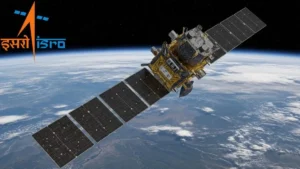The Psyche mission represents an ambitious venture to explore a distinct metallic asteroid positioned in orbit between Mars and Jupiter. The exceptional feature of this asteroid, named Psyche, is its composition, believed to be the exposed nickel-iron core of an ancient planet – a fundamental building block of our solar system.
Significance of Psyche
While the metallic cores of rocky planets like Earth are concealed deep beneath layers of rock and crust, Psyche offers a rare opportunity to directly investigate one such core. By studying Psyche, scientists aim to gain insights into the tumultuous history of planetary formation through collisions and accretion.
Mission Leadership
The mission is spearheaded by Arizona State University, with NASA’s Jet Propulsion Laboratory overseeing mission management, operations, and navigation. The spacecraft’s solar-electric propulsion system will be constructed by Maxar (formerly SSL), complemented by a suite of scientific instruments.
Science Goals
-
Unveiling Iron Cores: The primary objective is to comprehend a previously uncharted component of planet formation: iron cores.
- Peering Inside Terrestrial Planets: Psyche will facilitate an unprecedented examination of the interiors of terrestrial planets, including Earth, which are otherwise hidden from view.
-
Exploring a Metal World: Psyche represents a novel celestial body made predominantly of metal, contrasting with the typical rock and ice composition of other objects in our solar system.
Science Objectives
-
Core Identification: Determine whether Psyche is indeed a core or composed of unmelted materials.
- Age Determination: Assess the relative ages of different regions on Psyche’s surface.
- Elemental Composition: Investigate whether small metal bodies like Psyche contain the same light elements found in Earth’s high-pressure core.
- Environmental Conditions: Ascertain whether Psyche formed under more oxidizing or reducing conditions compared to Earth’s core.
- Topography Characterization: Study the topography of Psyche to gain insights into its surface features and structure.
Scientific Instruments
-
Multispectral Imager: A tool for capturing images in multiple wavelengths, aiding in the analysis of Psyche’s surface.
- Gamma Ray and Neutron Spectrometer: Used to detect gamma rays and neutrons emitted by Psyche, providing information about its composition.
- Magnetometer: Measures magnetic fields around Psyche, helping to understand its magnetic history.
- X-band Gravity Science Investigation: Utilizes gravity measurements to probe the asteroid’s internal structure.
-
Deep Space Optical Communication (DSOC): A pioneering laser communication technology, operating in near-infrared wavelengths, enhances data transmission between the spacecraft and Earth, enabling more efficient communication.




 LVM3-M6 Rocket Set to Launch on December...
LVM3-M6 Rocket Set to Launch on December...
 Which Animal is known as the River Horse...
Which Animal is known as the River Horse...
 RBI Board Sanctions Overhaul of Deposit ...
RBI Board Sanctions Overhaul of Deposit ...







